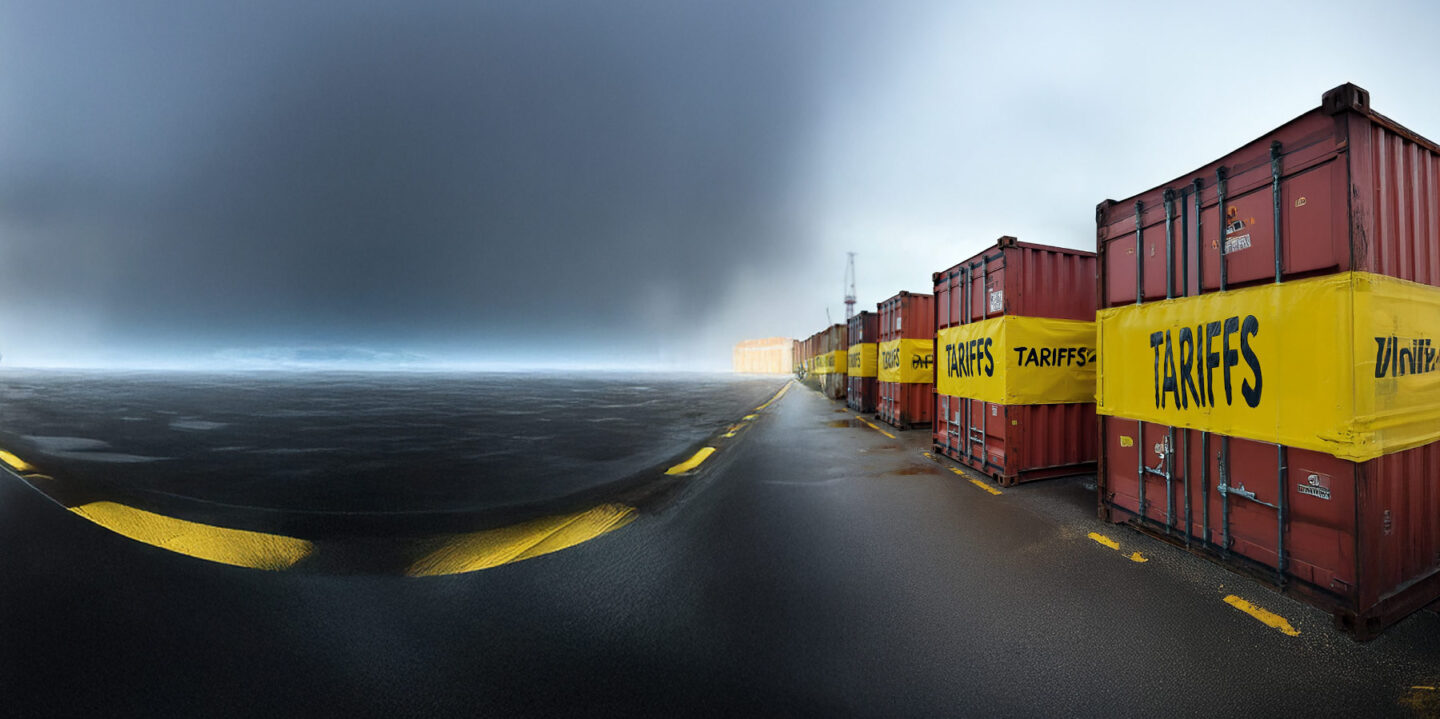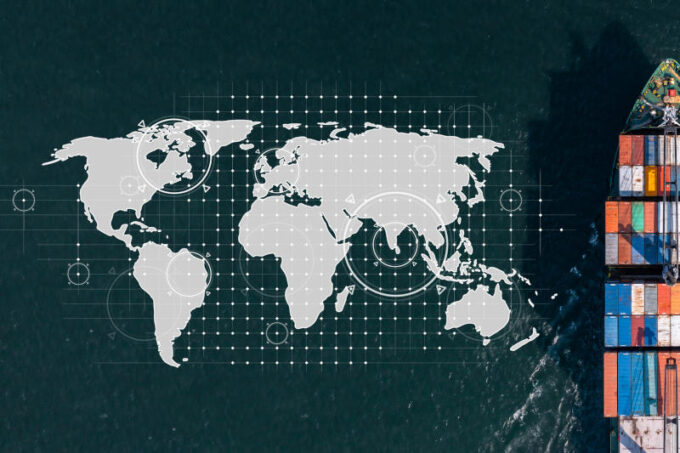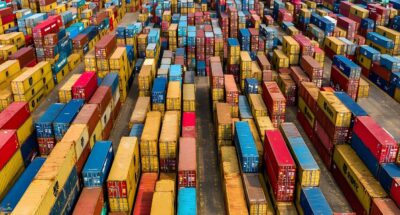
Supply chains need more than a tariff calculator
New models of economic development are emerging from global trade fragmentation. Supply chain executives must now weigh far more complex trade-offs, says Christos Cabolis ...

by Carlos Cordon Published June 20, 2025 in Supply chain • 7 min read
Many companies had expected a second Donald Trump term to bring regulatory loosening and market-friendly policy. But instead of clarity, they are now facing renewed volatility – especially on trade.
Trump’s so-called “liberation day” tariff announcement on 2 April – which imposed steep duties on major US trading partners – has pushed uncertainty in global value chains to a new high.
Multinationals with heavy exposure to Chinese manufacturing are facing an especially sharp recalibration, as the US administration sharpens its focus on Beijing. A temporary truce has reduced tariffs on Chinese goods from 145% to 30% – but only for 90 days. The reprieve does little to clarify the long-term direction. Trump has publicly floated an 80% tariff on China as “about right”. Still, resilience – not reactivity – may prove a more durable advantage.

Trump’s approach to trade has been marked by abrupt shifts – sharp escalations followed by sudden reversals – leaving little clarity on the long-term direction of travel.
Beneath the headlines, executives are left to face a more technical challenge: dealing with rules of origin. These rules determine where a product is “from” for tariff purposes, based on where it was made or how much it was changed during production. Once a compliance detail, they’ve become a chokepoint in global supply chains.
As tariffs rise on goods bound for the US, some companies are exploring friendshoring – shifting final assembly to countries like Mexico, where trade ties are more predictable. Others are assembling Chinese-made components in third countries across Southeast Asia or adding just enough value to legally shift a product’s origin.
In theory, products partly made in China but finished elsewhere may qualify for reduced tariffs – but only if they undergo “substantial transformation”, meaning enough change to alter their tariff classification. In practice, the bar is high, the rules are vague, and the documentation required is both costly and time-consuming. For companies with complex supply chains, proving origin is often more art than science.
The best defense is preparation. That means mapping where every part comes from, tracking value added at each stage, and keeping records that regulators can verify. Scenario planning also helps – testing whether a production shift actually delivers tariff relief or simply adds cost. Today, knowing your inputs is just as important as where your outputs land.

“Supply chains are even more complex, and reconfiguration is costlier than it looks.”
That pressure is already showing up in the numbers: US wholesale prices fell 0.5% in April, the steepest drop in five years, as businesses absorbed higher tariffs rather than pass them on to consumers. With margins under pressure, the idea of restructuring production to skirt duties is tempting – even if the true costs are harder to see.
Supply chains are even more complex, and reconfiguration is costlier than it looks. Still, some firms are moving ahead – less to dodge tariffs, and more to reduce long-term exposure to geopolitical risk.
Still, logistics, labor, compliance, and infrastructure all present barriers. Even in countries with strong trade access to the US – such as Mexico, Vietnam, or Thailand – skilled labor can be hard to scale, supplier networks may be limited, and facility build-outs take time. What looks viable on paper can quickly falter in execution.
Moreover, tariffs are no longer just a question of where a product is manufactured. The Trump administration has floated the idea of levies on Chinese-built shipping vessels – raising the prospect that even goods moved from a “safe” manufacturing base could carry hidden costs. Transport pricing is no longer a neutral variable.
Then there’s the issue of policy whiplash. Companies that scramble to adapt today may find their new configurations obsolete if Trump pivots tomorrow – or if a future administration reverses course yet again. In this environment, supply chain moves carry both operational and political risks.

Faced with so much volatility, many firms are taking a “wait and see” approach – holding back on larger supply chain decisions in the hope that policy direction becomes clearer.
The expectation in some boardrooms is that trade deals may follow – and that today’s penalties could be eased or reversed – making long-term decisions look premature. The UK, for example, recently secured a limited trade deal with the US that rolled back punitive duties on car and steel exports, offering a glimpse of how quickly tariff pressure can shift.
The logic here is less about inertia and more about hedging. If tariffs are being used as bargaining chips, then long-term decisions based on short-term threats may prove imprudent. US port operators and freight firms have reported sharp declines in shipments from China, as many importers draw down existing inventories rather than commit to fresh orders.
But the picture is uneven. In sectors facing potentially steep levies, activity has accelerated. In March, US imports of pharmaceutical and medical goods hit a record $53 billion, as companies rushed to build reserves. In tech, buyers pulled forward chip and smartphone orders ahead of expected export controls – a demand surge that helped lift quarterly profits at Samsung.
These firms are positioning for a broader structural reset, recognizing that tariffs are no longer just a Trump-era tactic. The EU, for instance, is weighing tariffs and tougher import standards on Chinese consumer electronics, targeting what it sees as state-backed market distortion.
In Asia, countries like China and India are moving in parallel, introducing policies to support domestic producers and reduce dependence on Western imports. The result is a more fragmented global trade landscape, with rising barriers on multiple fronts – not just in the US.
The goal is no longer to chase short-term arbitrage but to design supply chains that can withstand – or even benefit from – long-term fragmentation.
For some companies, localization – not tariff arbitrage – is the endgame. Rather than rerouting goods through lower-tariff countries, they are building inside the market itself. Chinese automaker BYD, for example, has announced a new electric vehicle plant in Hungary to serve the EU directly – a move designed to bypass future levies by producing within the single market rather than exporting into it.
The broader shift reflects a change in mindset. The goal is no longer to chase short-term arbitrage but to design supply chains that can withstand – or even benefit from – long-term fragmentation. That requires a mix of preparation and restraint: mapping supply chains, tracking inputs, modeling scenarios, stockpiling where justified, and resisting the temptation to trade resilience for short-term relief.
Four approaches are emerging as consensus best practice:

Professor of Strategy and Supply Chain Management
Carlos Cordon is a Professor of Strategy and Supply Chain Management. Professor Cordon’s areas of interest are digital value chains, supply and demand chain management, digital lean, and process management. At IMD, he is Director of the Strategies for Supply Chain Digitalization program.

November 19, 2025 • by Christos Cabolis in Supply chain
New models of economic development are emerging from global trade fragmentation. Supply chain executives must now weigh far more complex trade-offs, says Christos Cabolis ...

November 3, 2025 • by Ralf W. Seifert, Richard Markoff in Supply chain
The COVID pandemic elevated geopolitical understanding as a critical consideration for supply chain managers – and it remains essential to their success today. ...

October 6, 2025 in Supply chain
To help set the agenda for supply chain leaders beyond 2025, this guide examines the industry priorities and outlines five strategic areas of focus for supply chain transformation....

October 6, 2025 • by Ralf W. Seifert, Katrin Siebenbürger Hacki in Supply chain
In this exclusive interview, Jeroen van Weesep, Senior Vice President and Head of Supply Chain of Personal Health at Philips, reflects on how supply chain leadership evolves to deliver value in an...
Explore first person business intelligence from top minds curated for a global executive audience